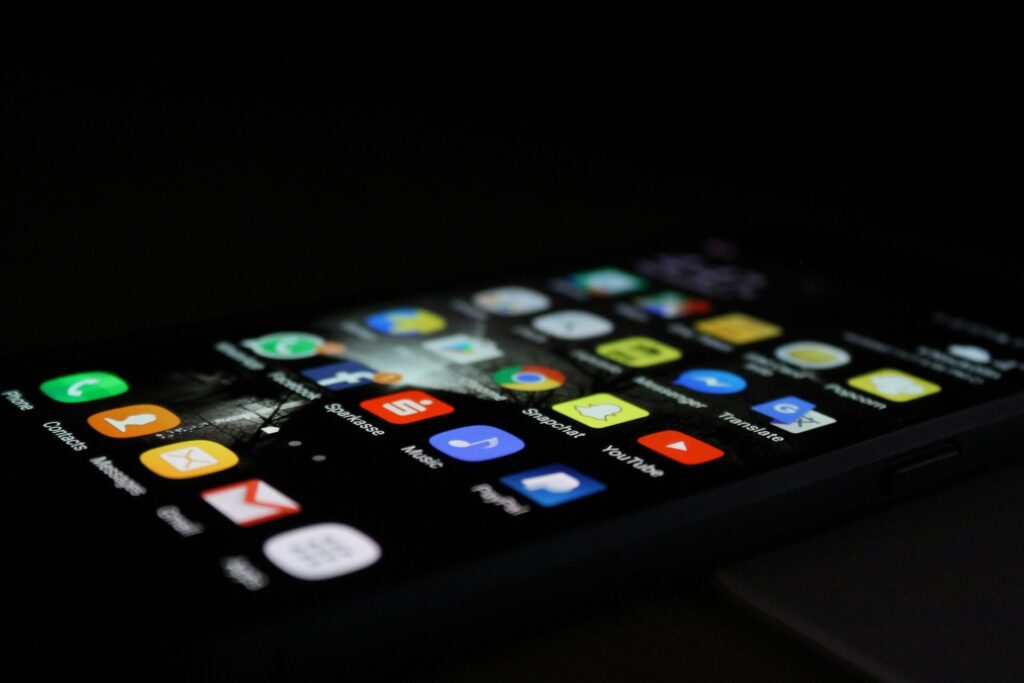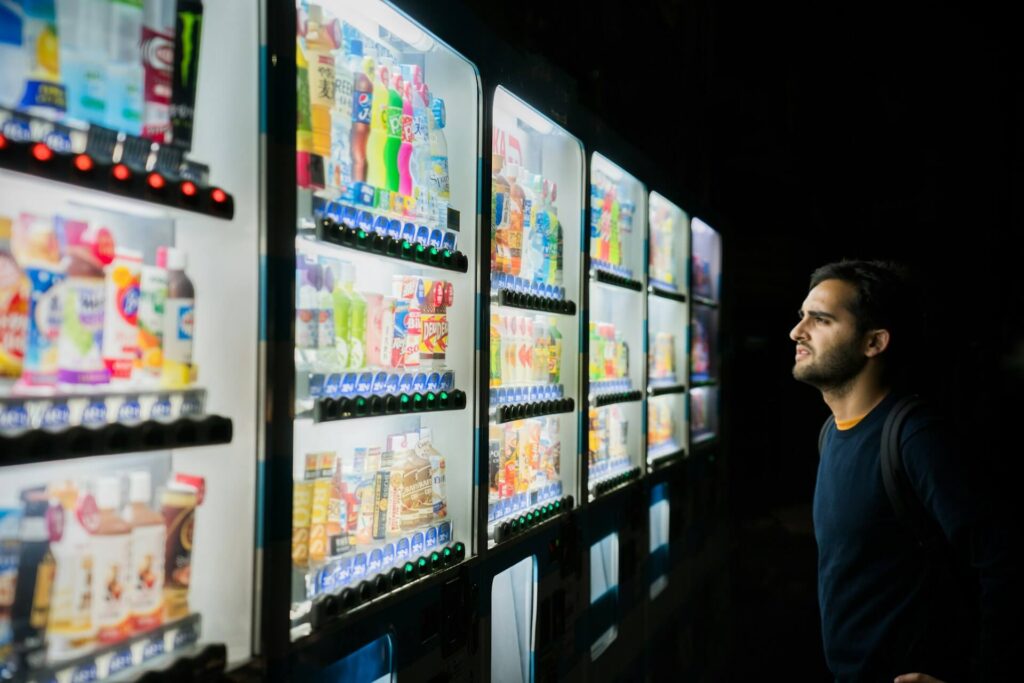A weather app provides a vital service for customers and can also prove highly lucrative for its creator. These applications pull current data from an API like Visual Crossing on a set schedule, allowing app users to stay abreast of weather conditions throughout the day.
Building a fully functional weather app requires market research, an understanding of the target audience, and good design to compete with the best weather apps. After reading this guide, you’ll have a better appreciation for the skills required to create a weather application, enabling you to get started on your next app idea.
Why Build a Weather App
There is a growing demand for weather apps among both consumers and business users, meaning that this can be a lucrative and sustainable business move. This guide will teach you everything you need to know about building a weather app, including market analysis, feature selection, coding, and launching your new application.

Weather App Market Size
The weather app market is a thriving industry that is expected to be worth $2,238.3 billion by 2033. The largest weather app, AccuWeather, has an active user base of 1.5 billion monthly, while the Weather Channel has around 100 million monthly and was worth $850 million in January 2023.
These market leaders can teach new app developers what consumers are looking for. AccuWeather is the most popular due to its native integration with multiple platforms. When building your app, studying these market giants can help you position your app effectively by showing off its unique strengths.
Step-by-Step Guide to Building a Weather App
Weather app development is a complicated process, as with any application development. You want a functional but user-friendly weather app that includes all the functionality your audience expects, particularly hyper-local forecasts based on the user’s location. Let’s explore the steps necessary to build a weather app from scratch.
1. Research Competitors and Define Your Market Niche
Researching the most popular apps, like Weather Underground, Carrot Weather, WeatherBug, and Windy, can help you identify gaps in the marketplace. Look at reviews and see what people are requesting so you can include this in your app.
First, define whether you want a simple app or a full-featured one. The Weather Channel is a good example of a complete weather app, which includes historical weather data, satellite maps, wind speed, and precise weather forecasts.
This research is essential before investing in design or development, as it will help guide your software development process.

2. Decide Which Features to Include
Any good weather app should have core features like current temperature, precipitation, and near-future forecasts. However, you can also add things like UV index, air quality index, sunrise and sunset times, and push notifications for severe weather. Your available features will depend on the weather API you choose to use, as different APIs have different data.
3. Find a Weather API Provider
A reliable weather API lets you fetch data from weather stations using an API key. This means you don’t have to store massive amounts of data on local servers; instead, you can just connect to the API’s server and get the information on demand.
Visual Crossing is one of the best weather APIs available, thanks to its easy integration, fast updates, and comprehensive data. In addition to the typical weather data you’ll find anywhere, we also have specialized data for specific use cases, like solar radiation conditions, weather data for agricultural activities, wind energy, and maritime data.
4. Choose What Platform to Sell On
The various platforms you may use include Amazon App Store, Apple App Store, Google Play, Microsoft Store, Samsung Galaxy Store, and Huawei AppGallery. Certain platforms are more popular in specific regions, so you should research which ones are most popular in your chosen market. Western Europe predominantly uses Google Play and Apple App Store, while Asia typically uses Huawei AppGallery.
Most platforms can be used for different products, such as wearables and tablets. For Android users, Google Play has the Wear OS platform, which is used for smartwatches, as well as a standard store for web and mobile.
You should also research which programming stack will work best for your chosen platform. Java is good for Android, which usually uses the Amazon App Store or Google Play, while Swift and Objective-C are used for the Apple App Store.

5. Pick the Right Programming Languages
The programming language you use is a major decision that is influenced by your chosen platform, your team’s familiarity with the languages, and scalability. These are some of the common languages used, as well as the platforms they work with.
Swift
This is used for both mobile and web development on Apple products. It offers built-in functionality for parsing JSON results and only needs a single URL to build queries. Review our guide to learn about loading weather data in Swift using our API.
JavaScript
JavaScript works for Windows, Apple, and Android mobile platforms. Developers generally combine HTML files, CSS files, and JavaScript files to create a responsive weather application. There are numerous libraries you can use to build a query, and we have a tutorial on how to load weather data in JavaScript.
Python
Python works for macOS, Windows, and Linux. To load weather data in Python, you can use a JSON or CSV file. A CSV file requires more specificity, making it good for specialized applications where you only want to use one type of data.
PHP
PHP is usually used for web development, such as placing widgets on blogs and news sites. You can request historical data with a separate line, which may be useful for your needs. We provide detailed instructions on loading weather data in PHP.
Our GitHub repository contains full documentation for these languages and others. Our comprehensive API documentation helps programmers develop their applications confidently.
6. Design a Great User Interface
A good weather app has a responsive design, intuitive controls, and real-time visuals. Simple weather-related animations with current weather data help people understand the current conditions at a glance, while using a mobile-optimized font family will create a more enjoyable user experience.
Your icon is also important for branding purposes and should be completed by a professional graphics designer. You should also consider design accessibility by considering things like the contrast between the background information and font color, the font size and text alignment, and the box shadow contrast.

7. Monetize Your App
Monetization helps you recoup your development expenses and builds customer loyalty. The three most popular ways to monetize are ads, ad-free upgrades, and premium options. Combining these can diversify your cash flow.
Advertisements
These are usually small banners at the bottom or top of the page. To receive advertisements, you must register your application with your chosen ad service. The service will give you a code that you insert into the app.
The pricing models for these services vary. You may choose Cost-Per-Mille (CPM), Cost-Per-Click (CPC), Cost-Per-Action (CPA), or Cost-Per-Install (CPI), all of which have different expenses and success rates.
Ad-Free Subscriptions
After adding advertisements, you can charge users to remove them. This could be a one-time fee or a monthly subscription that includes premium features. For weather apps, a flat fee may work better as people usually only spend a few minutes on them.
To develop the upgrade, you need to add an exception in your scripts that blocks the ad code from displaying.
Premium Features
This allows users access to additional features, such as extra themes or custom ones, different background colors, faster refresh rates, or exclusive data. Common choices for further weather information include UV radiation, air quality alerts, and weather comparisons by date and location.
Some developers will conduct A/B studies after launch to determine which monetization options provide the best return on investment. Additionally, some monetization choices work better on different platforms.
8. Perform App Testing Before Launch
Extensive testing is crucial to ensuring your application finds a wide audience. This includes functional use, performance under load, user feedback, and accessibility, each of which examines a different element of app performance.
Functional studies ensure the application is performing the tasks users expect it to. For example, you want to ensure that the text-align function is working and that the font is not hidden under a box shadow or background image.
Performance under load looks at whether your servers can handle the expected real-world traffic. With user feedback, you work with beta users to refine the user experience and reduce frustration. This is usually combined with accessibility checks to ensure people of all abilities can use your product.
Weather apps are judged by their reliability and performance. Crashing, lagging due to excessive API calls, inaccurate information, and high battery usage will make users migrate to a different application. By checking for these issues ahead of time, you will prevent common problems that lead to failure.
9. Launch on App Stores
Once you have completed testing, you must submit it to your chosen app stores, such as the Apple App Store, Google Play Store, Amazon App Store, and Microsoft Store.
To be accepted in a certain store, mobile icons must fit very specific parameters, such as box sizing, margin top, max width for border box thickness, and border radius. Be sure you have developed an attractive icon and interesting description, which will make people more likely to download your app.
While every app store has different requirements, every application must comply with the relevant data privacy laws to be accessed in certain regions. In the US, this is typically the Consumer Data Privacy and Security Act of 2021. The most comprehensive US law is the California Consumer Privacy Act (CCPA), so complying with this standard should work in any state.
To be distributed in Europe, you must comply with the EU’s General Data Protection Regulation, which is considered one of the most robust data privacy standards in the world. Meeting these benchmarks should get you access to any app store. You should consult with a data privacy expert to ensure you have met all the requirements before submitting your app to your chosen store.
Localization options, such as adding support for different languages, will also help you gain traction. Work with professional translators on this project, as poor regionalization may cause app users to lose trust in your services.

10. Maintain and Improve Post-Launch
Your service should continually improve. The best way to do this is to take an iterative approach, which means relying on user feedback and testing to identify your application’s next steps.
Regularly check your analytics, such as installs, churn rate, and user sessions, especially after pushing an update. This can help you determine how users received your updates and what might need to change.
Reviews are a helpful way to learn more about what your user base wants. Watch for certain keywords, like “loads slowly,” “too expensive,” “too many ads,” or “not a good value.” Other common complaints are frequent crashes, excessive battery consumption, and lagging forecasts.
Always respond graciously to feedback and ask for more details. Then, bring the complaints back to your development team for a workshop on how to better meet user expectations.
Your competitors are always improving their services, so you must do so as well. Keep a close eye on what your competitors are doing, and watch for new apps that hit the market. Sometimes, another app can inspire you to add a new feature, such as stargazing conditions, RSS feeds, or air quality alerts.
Documentation is crucial and helps build trust with your user base, so always provide changelogs and update notes. If your changes were inspired by user feedback, be sure to note this in your documentation. Users appreciate companies that are willing to listen to them, so this can build user loyalty.
The Bottom Line
While simple in design, weather applications have many factors that influence their development. These include choosing the correct platform, picking a weather API, deciding on features and programming languages, and developing user appeal.
Any application must stay competitive as the market changes and new apps become available. Always prioritize continual development and remain responsive to user feedback so that you can offer your customers the best experience.
Visual Crossing’s Timeline Weather API offers everything developers need to create high-performance, data-rich weather apps that users will love. This easy-to-use API has robust functionality and numerous pricing tiers depending on your specific needs. You can access basic weather data like temperature, precipitation, and 15-day forecasting, but we also provide advanced functionality like solar radiation and growing conditions.
We aim to make development a breeze through our numerous guides, sorted by language and platform. If you have more questions, you can always use our continually monitored weather forum or reach out to our support team.
FAQs About Building a Weather App
How much does it cost to build a weather app?
Development costs will depend on how complex your project is. It will cost about $10,000 to create a simple weather app for one platform, while a more feature-rich one may cost at least $60,000. If you would like to include artificial intelligence (AI), you should budget for anywhere between $60,000 and $150,000 or more. Very advanced applications can cost well over $600,000.
Factors that influence how much it costs to create your app include how many features you have, what customization you provide for users, how large your development team is, how much the API costs, and what testing you perform. In general, developing for iOS and Android is more expensive than other platforms.
What features should a weather app have?
At minimum, an app should display the city name and time, along with the current weather conditions. This should include temperature, precipitation, and a short weather forecast, at least for the next few hours. If you would like to add more functionality, you can consider things like air quality, UV index, sunrise and sunset, a 15-day weather forecast, and historical data.
How do I choose a weather API for my app?
Your chosen API should contain the information you want to provide to app users, particularly if this is a specialized weather data application meant for industry use. As an example, if you are creating a weather app that solar farms can use, you will need specialized weather data like UV indexes and sun elevation.
The API should also be easy to integrate into the app code and available for your chosen programming language. Visual Crossing makes it easy to implement our API in nearly any language, including Python and JavaScript.
Price is often a major consideration for app developers when choosing their API. Visual Crossing conveniently provides different pricing tiers based on the number of API requests you expect to use per day.
Which programming language is best for a weather app?
Python and JavaScript are the most widely used programming languages for weather apps because they are versatile, easy to use with APIs, and have extensive libraries. With Python, you only need a single line of code to get a request from the API, while JavaScript is compatible with most app stores. However, the decision depends on what your developers are comfortable with.
Can I monetize my weather app?
Yes, you can monetize your app using in-app ads, ad-free subscriptions, and premium features. Many developers perform A/B testing to see which types of monetization have the best returns on their chosen app store.
